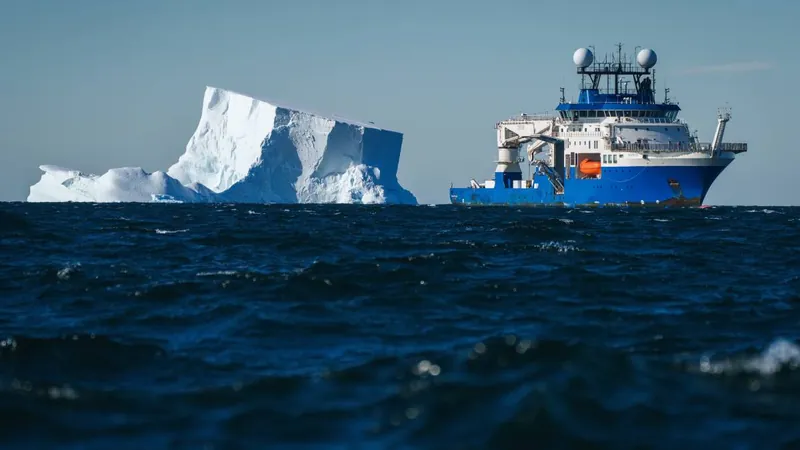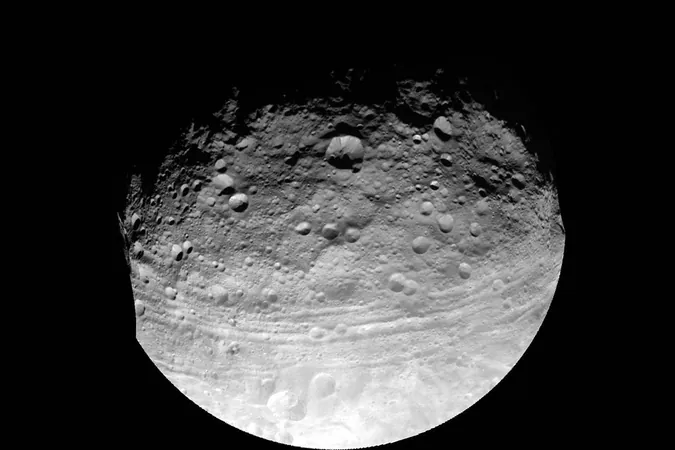
Thriving Antarctic Ecosystem Exposed by Unexpected Iceberg Calving
2025-03-31
Author: Wei Ling
In a remarkable turn of events in mid-January, a dedicated team of scientists aboard the Schmidt Ocean Institute’s research vessel, R/V Falkor (too), stumbled upon a unique opportunity to explore a previously inaccessible part of the Antarctic region. The expedition was focused on the relatively unexplored Bellingshausen Sea, but the mission quickly pivoted when unexpected sea ice conditions confined their research to the Ronne Entrance.
Patricia Esquete, a marine biologist at the Universidade de Aveiro in Portugal and co-chief scientist, described their initial disappointment: “We found ourselves restricted to a smaller area.” However, their luck changed dramatically when satellite imagery revealed a crack in the George VI ice shelf, which soon led to the calving of a colossal iceberg, A-84, measuring approximately 510 square kilometers — roughly the size of Chicago.
This iceberg's abrupt departure unveiled a hidden patch of seafloor that had remained icy for potentially centuries. "As soon as we realized that the iceberg had moved on, we made a quick decision to sample the newly exposed seafloor," said Esquete. Upon arrival, the researchers discovered a vibrant ecosystem bursting with life, rivaling the biodiversity typically found in nutrient-rich open waters.
Before encountering A-84, the scientists had aimed to document the biodiversity of nearby deep-sea habitats and analyze the oceanic conditions. As Dawn Wright, an oceanographer at Environmental Systems Research Institute (Esri), previously noted, understanding both the physical composition and life forms in deep-sea environments is a “holy grail” in oceanography.
The challenge of accessing these ecosystems is often complicated by sea ice. Research vessels can rarely approach ice shelves closely, and remotely operated vehicles (ROVs) are limited in their operational distance from the ship. Planning and funding such expeditions can take years; hence, the opportunity posed by A-84’s calving was particularly unique.
This serendipitous timing allowed Falkor (too) to reach the newly exposed seafloor just 12 days after the iceberg calved, granting scientists an incredibly rare opportunity to study an untouched ecosystem. "Having the chance to observe this area as if it were still covered by ice is an incredibly rare opportunity," said Bernhard, a biological oceanographer at Woods Hole Oceanographic Institution.
The research team conducted a comprehensive set of observations, collecting sediment samples, mapping the seafloor with lidar technology, and analyzing ocean currents. They utilized the ROV SuBastian to document an astonishing variety of marine life, including corals, sponges, invertebrates, cephalopods, king crabs, and krill, alongside several unidentified species. The presence of these organisms signified that this thriving ecosystem had been sustained under ice, likely due to a consistent influx of nutrients from deep currents.
Moreover, the scientists were surprised to discover significant populations of large sponges and other deep-sea organisms, which suggested that this ecosystem remains resilient even under extreme Antarctic conditions. “We found the same type of ecosystems you’d expect in other areas of the Bellingshausen Sea,” noted Esquete, emphasizing that this ecosystem had thrived in an environment previously shielded by ice for centuries.
Looking ahead, Falkor (too) intends to return to the area to monitor changes now that the ice has melted. With the advent of open-water conditions, these ecosystems may face new ecological challenges. "The increasing settlement of organic materials could disrupt the balance of these fragile communities," warned Bernhard.
As climate change continues to accelerate the melting of Antarctic ice, this newly uncovered ecosystem could serve as an important indicator of broader environmental changes affecting polar regions. "The loss of ice, which plays a critical role in sustaining these ecosystems, signals troubling prospects for their health,” Wright asserted, highlighting the urgency for the oceanographic community to continue monitoring these changes. The unfolding story of the Antarctic ecosystem promises revelations crucial not only for scientists but for the global understanding of our planet’s health.


 Brasil (PT)
Brasil (PT)
 Canada (EN)
Canada (EN)
 Chile (ES)
Chile (ES)
 Česko (CS)
Česko (CS)
 대한민국 (KO)
대한민국 (KO)
 España (ES)
España (ES)
 France (FR)
France (FR)
 Hong Kong (EN)
Hong Kong (EN)
 Italia (IT)
Italia (IT)
 日本 (JA)
日本 (JA)
 Magyarország (HU)
Magyarország (HU)
 Norge (NO)
Norge (NO)
 Polska (PL)
Polska (PL)
 Schweiz (DE)
Schweiz (DE)
 Singapore (EN)
Singapore (EN)
 Sverige (SV)
Sverige (SV)
 Suomi (FI)
Suomi (FI)
 Türkiye (TR)
Türkiye (TR)
 الإمارات العربية المتحدة (AR)
الإمارات العربية المتحدة (AR)